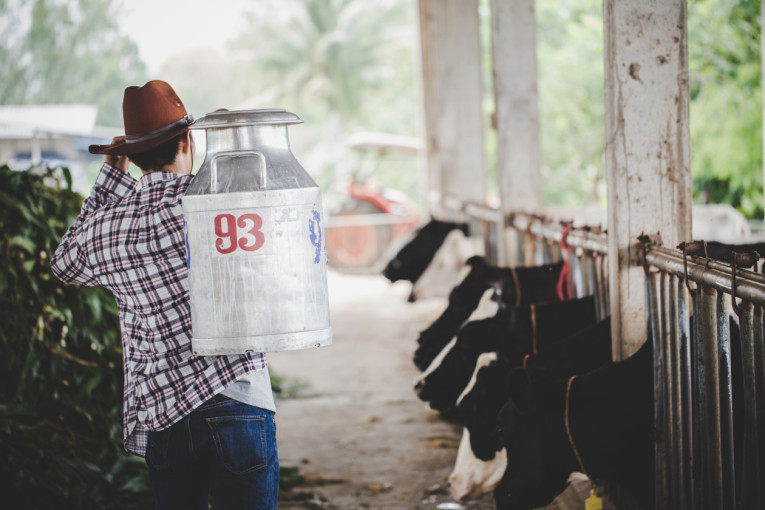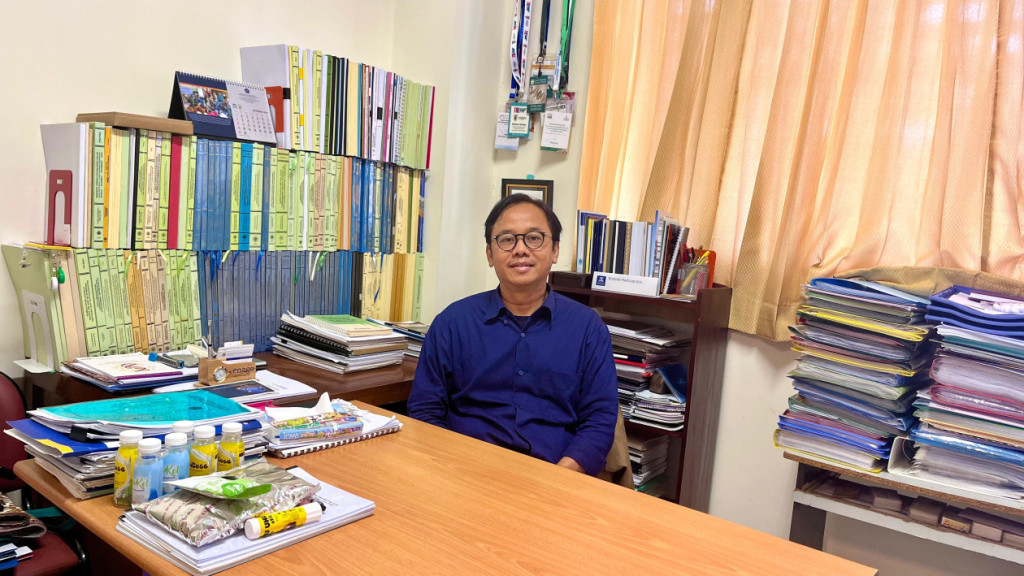
Free lunch and milk programs are among the key initiatives of the newly elected president and vice president, Prabowo Subianto and Gibran Rakabuming Raka.
This program is seen as one of the government’s efforts to improve the nutrition of Indonesian children, particularly since the country’s milk consumption rate is only 16.3 kg per capita per year (BPS, 2020).
This figure is significantly lower than other ASEAN countries like the Philippines, Thailand, Vietnam, and Malaysia, where consumption reaches up to 65 kg per capita per year. The hope is that increased milk consumption will help prevent stunted growth and improve protein-based nutrition.
However, to successfully implement this program, the government must import large quantities of milk and dairy cows to meet domestic demand.
According to data from Statistics Indonesia (BPS) and the Directorate General of Livestock and Animal Health in 2021, Indonesia’s national milk demand stood at 4.38 million tons, while domestic fresh milk production could only cover 997.3 thousand tons, or 22%, produced by 584,582 dairy cows.
The remaining 78% had to be imported, underscoring the lack of self-sufficiency in domestic milk production.
Professor Widodo Hadisaputro from the UGM Faculty of Animal Science shared his insights on the government’s plan to import large quantities of milk to support the free milk program.
According to Professor Hadisaputro, the government should avoid dependence on milk imports to prevent parties seeking to profit from the national agenda.
To avoid dependency on milk imports, Professor Hadisaputro emphasized the need for a strategy that limits imports, reduces reliance on foreign milk, and simultaneously revitalizes the dairy cattle and goat farming sector and the national dairy industry to achieve long-term self-sufficiency.
Achieving national dairy independence will require increasing the dairy cattle population and improving productivity. Additionally, advancing efficient and effective dairy farming technology, providing sufficient land for feed, and developing human resources will be essential.
“To achieve this, proper livestock management and selecting high-quality, genetically adapted breeds for tropical climates in lowland areas are necessary,” he explained Wednesday (Oct. 16).

Professor Hadisaputro pointed out the significant challenges and risks of the government’s plan to import cows from Australia, New Zealand, Brazil, or Europe to meet national milk needs. The plan aims to quadruple the number of adult dairy cows by 2029 to around 2.3 million.
“The hope is to increase milk production sixfold to 6 million tons. However, importing large numbers of livestock requires highly technical processes and an extraordinary effort, as it must comply with import regulations from both the source country and our own,” Professor Hadisaputro remarked.
He stressed that the country must adhere to the regulations of the source country, Minister of Trade Regulation No. 29 of 2019, concerning the Import and Export of Animals and Animal Products, as well as the protocols of the Agricultural Quarantine Agency, including all the necessary documentation.
“One crucial aspect to watch out for is quarantine. We must ensure that the imported livestock do not carry diseases that could spread to local livestock, as happened with Foot and Mouth Disease,” he warned.
In addition to the importation bureaucracy, the country and businesses must also consider the availability of proper housing, good forage for feed, and sufficient land for grazing. This could lead to competition for land use between humans and livestock.
“The dairy independence program should not only benefit large dairy farming industries but also promote smallholder dairy farming, whether through cooperatives or farmer groups,” Professor Hadisaputro asserted.
He also suggested a partnership-based scheme between large corporations and smallholder farmers. He argued that it would be better if farmers could develop dairy cattle provided through large corporations.
“If possible, this scheme could enable smallholder farmers, cooperatives, and established community-based dairy farms to own cattle, making the program more tangible,” he emphasized.
Professor Hadisaputro believes that such a scheme could generate more jobs, increase milk production, boost farmers’ incomes and welfare, raise the number of dairy farmers, and transform the dairy industry, all contributing to increased national milk consumption.
“This kind of import landscape is far better because it prevents domestic producers from being undercut by cheaper imported milk, even though from a purely economic perspective, importing milk might be faster,” he explained.
The professor hopes that smallholder farmers and cooperatives can be empowered through location mapping that aligns with supportive agroecological conditions, particularly outside Java, where the Foot and Mouth Disease endemic has affected many areas.
Another potential strategy is developing tropical dairy cattle breeds as an alternative that is more suited to Indonesia’s climate and expanding goat dairy farming. He also emphasized the importance of innovation and downstream dairy product development.
“Smart Dairy Farming is recommended for corporations, where temperature and humidity in the barns can be controlled using sensor technology, reducing cow stress and increasing productivity,” he concluded.
Author: Bolivia
Editor: Gusti Grehenson
Photo: Freepik

